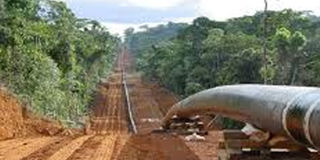Total, Tz sign pipeline deal to ease Uganda’s work

French oil major Total E&P yesterday signed a separate Host Government Agreement (HGA) for the proposed East African Crude Oil Pipeline (EACOP) with the Tanzanian government, bringing closer the realisation of the project
What you need to know:
- Uganda signed its HGA with Total E&P in early September, paving way for the final Tanzanian version which was signed yesterday in Dodoma at the ceremony presided over by President John Pombe Magufuli & Total executives.
French oil major Total E&P yesterday signed a separate Host Government Agreement (HGA) for the proposed East African Crude Oil Pipeline (EACOP) with the Tanzanian government, bringing closer the realisation of the project.
The HGA, the cornerstone of the multi-billion-dollar project, highlights governmental rights and obligations, investor duties, environmental and other relevant standards, liability, legal framework, arbitration, and closure of the project.
Uganda signed its HGA with Total E&P in early September, paving way for the final Tanzanian version which was signed yesterday in Dodoma at the ceremony presided over by President John Pombe Magufuli & Total executives.
Total E&P, the lead developer of the pipeline project, described the development as “an important milestone towards implementation of EACOP.”
Two days after signing the Ugandan HGA on September 13, President Museveni and Ugandan oil technocrats flew to Tanzania to provide assurances to the Tanzanian side and also signed a communique of endorsement of the principles of the agreement.
The Ugandan government and oil companies—French Total E&P, and China’s Cnooc—are eyeing this December or latest end of January 2021 as the new dates for taking Final Investment Decision (FID) for development of the oil fields and EACOP.
The clearing of the HGA now paves way for commencement of negotiations on two key agreements for EACOP, the Shareholders Agreement that details the sharing structure, and the Transportation and Tariff Agreement about taking oil to the international market.
The capital expenditure for developing the 1,445km pipeline, which stretches from Hoima in mid-western Uganda to Tanga Port in Tanzania, is $3.55b (Shs13 trillion), 70 per cent of which will be raised from international lenders.
Total E&P backed the Hoima-Tanga route as the least cost route for Uganda to transport its oil to the international market on account of convenient constructability (flat terrain), highest availability (fully functional), lowest environmental footprint, and provided the shortest schedule for seeing first oil export. This was besides Tanzania’s convenient land tenure of no freehold system.
Eighty per cent of the pipeline, 1,147km, will be on the Tanzanian side, and it is estimated that 80 per cent of the project capital expenditure will be spent in Tanzania.
The Ugandan section of the pipeline is about 296kms through 10 districts and 25 sub-counties, and 172 villages, affecting at least 4,121 persons of which 2,199 are bibanja holders (squatters), 1,056 are land owners and 866 are licensees.




